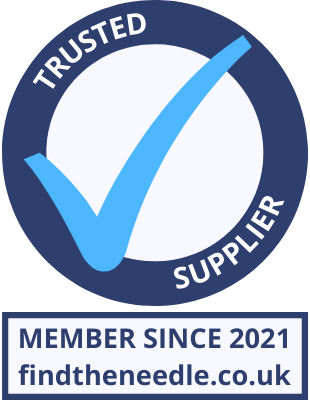 Add My Company
Add My Company
Sign In
What are resin identification codes?
10-03-2021

Resin Identification Codes are the number that you see on the bottom of some rigid plastic packaging. They were originally developed in the 1980s to categorise plastic into types, to ensure consistency in plastics manufacturing and recycled plastics reprocessing.
As plastic bottle wholesalers, we have watched with interest how Resin Identification Codes have become used more widely by consumers in order to recycle plastics.
Different kinds of plastics, such as PET plastic bottles, must be recycled separately, with similar materials, to preserve the value of the recycled material, and enable its reuse in other products after being recycled.
The Resin Identification Codes 1 to 6 mean that the plastic packaging is made from one of six specific types of plastic: 1 means polyethylene terephthalate (such as PET plastic bottles), 2 means high-density polyethylene (HDPE), 3 means polyvinyl chloride (PVC), 4 means low-density polyethylene (LDPE), 5 means polypropylene (PP), and 6 means polystyrene (PS).
The number 7 means the packaging is made of a type of plastic other than the previous six, or is a mixture of plastics. This category includes things like bioplastics, composite plastics (like crisp wrappers), plastic coated wrapping paper and polycarbonate (which contains BPA).
Which resin identification codes are recyclable?
Resin identification codes appearing on packaging does not guarantee that the packaging is recyclable but significant progress is being made on reducing the use of non-recyclable materials, especially in the food sector.
PET plastic (1)
The most widely recycled plastic is PET, which has the code 1. This material is used in our PET plastic bottles and is often used for clear plastic bottles. It has a gloss finish and offers good chemical resistance.
PET can be recycled into polyester fabric and filling for fleeces, carpets and cushion fillings. It can also be re-used as rPET plastic, where it goes through the whole lifecycle again to become rPET plastic bottles.
HDPE plastic (2)
High Density Polyethylene is another form of widely recycled plastic. It has a matt finish and is compatible to most acid and alkaline solutions. HDPE has limited compatibility to solvents.
HDPE is often found in things like milk bottles, plastic bottle caps and closures, shampoo bottles, cleaning product bottles, tubs, and jerry cans.
PVC (3)
Polyvinyl Chloride is not recyclable in normal Local Authority collections. This type of plastic is usually found in cling film, hoses, and plastic pipes.
LDPE (4)
Low-Density Polyethylene is recyclable, but you’ll need to check with your Local Authority. Here is a free tool to do that.
LDPE is often found in things like hand cream tubs, carrier bags, bin liners and packaging films.
PP (5)
Polypropylene can be recycled. It has a satin finish and an excellent range of chemical compatibility.
It is usually found in packing tape, plastic straws, ketchup bottles, microwavable meal trays and butter tubs.
Polypropylene can be recycled into brooms, brushes, garden rakes and plastic trays.
PS (6)
Polystyrene is not recyclable in normal Local Authority collections. There are two types of polystyrene (brittle plastic) and expanded polystyrene (light, insulating, waterproof plastic). The harder type is used in things like plastic forks and yoghurt pots and the softer variety is used in foamy takeaway packaging, Styrofoam and some types of insulation.
Other plastics (7)
Plastics with the resin identification code 7, meaning ‘other plastics’, are not recyclable in normal collections.
How can resin identification codes help?
As stated by Wrap at clearonplastics.com: “Plastic provides a durable, mouldable and hygienic solution for much of our household packaging, and unfortunately, in most instances it can’t simply be replaced by other materials.”
Plastic is not the problem. It is the wider approach to plastic recycling that needs to change. Cambrian Packaging are plastic bottle wholesalers and we work hard to raise awareness among consumers of the different kinds of plastic and plastic recycling, to ensure more ends up being re-used. For example, HDPE is re-used in our range of recycled plastic bottles made from rHDPE – so every time you recycle a milk bottle, you are helping to create recycled plastic!
By paying attention to the Resin Identification Codes and checking what plastics can be recycled locally, we can ensure we are recycling the maximum amount of plastic. However, there is still a long way to go towards building up sufficient infrastructure to allow consumers to recycle more types of plastic.
For more information on What are resin identification codes? talk to Cambrian Packaging
Enquire Now
List your company on FindTheNeedle.

